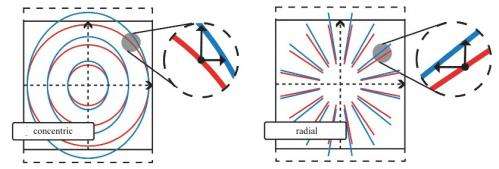Visual perception: Vertical disparity corrects stereo correspondence

It is well known that humans perceive 3D structures of scenes using the horizontal difference of images observed by our eyes— referred to as horizontal (binocular) disparity. It is also known that vertical disparity produces the sensation of surface slant about the vertical axis.
Intriguingly, it is not clear how the visual system uses vertical disparity for 3D perception. It could be used in the process of stereo correspondence, in the process of correcting horizontal disparity or in both processes.
Here, Hiroyuki Mitsudo and Ayumi Sakai at Kyushu University and Hirohiko Kaneko at Tokyo Institute of Technology report that vertical size disparity is used to correct stereo correspondence for the perception of surface slant.
Perceived slant of stereoscopic patterns consisting of random dots, concentric lines, and radial lines was measured. One of the two images was magnified vertically, in other words, vertical size disparity was introduced into the stimulus.
The results showed that despite the differences in the local horizontal disparity, perceived slants were similar for the three patterns.
The results are consistent with the idea that the visual system uses vertical disparity in the process of establishing local stereo correspondence.
More information: Mitsudo, H., Sakai, A. and Kaneko, H. Vertical size disparity and the correction of stereo correspondence, Perception 42, 385-400 (2013). (DOI): 10.1068/p7387


















